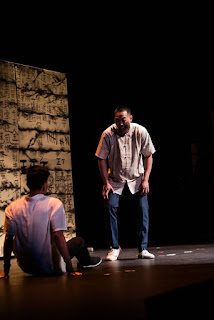Week 1: Two Cultures
My name is
Harrison, and I am a Political Science student at UCLA. Personally, I have
experienced the two cultures of art and science. Although I am pursuing a
Bachelor of Arts, I still have experienced the culture of science. Unique to
UCLA’s Political Science department, I am concentrating my major’s focus upon
the data analytical approach behind illuminating political phenomena, having utilized
statistical and data analytical programs to model and study political events
and trends. Having been a pianist and violinist for the past twelve years, as
well as an actor in theatrical productions, I have also cultivated an appetite
and talent for the arts.
In C.P.
Snow’s article, he introduced the concept and two cultures as being separated
by literary intellectuals and scientists, each of these cultures as being
right-brained and left-brained, respectively. At UCLA, the campus is split in
half – one half being South Campus and the other half being North Campus. South
Campus is where the majority of STEM classes are held, while North Campus is
where the majority of the humanities and social science classes are held.
Ironically, I take my social science-based Political Science classes in North
Campus and I take my computing classes for my concentration in South Campus,
showing how even as a Political Science major, the culture of science is
intersecting with my studies.
Additionally,
being a Chinese American in Los Angeles, has allowed me to experience two
cultures on a daily basis. Despite the differences, I have incorporated my more
traditional, Chinese roots and cultural lessons with the more entrepreneurial,
and free-spirited mindset of the West into my life. In our modern world, it is
amazing to see how science and art intersect, as Wilson supports this fact by noting that artists have been enthused in adopting the
benefits of technology into their work. I wasn’t as aware of this until taking
this class and find that the blurring of the two cultures is fascinating. I
hope to learn more about the two cultures so that I can take the lessons into
my daily experiences, both in the classroom and at work, where a diverse
perspective will enable me to bring more to the discussion and enable me to
look at problems from a unique vantage point.
Works Cited
Bohm, D. “On Creativity.” Leonardo, vol. 1, no. 2, 1968, pp. 137–149., www.jstor.org/stable/1571951
Kelly, Kevin. "The Third Culture." The Third Culture. N.p., n.d. Web. Feb. 1998
Snow, C. P. The Two Cultures and the Scientific Revolution. New York: Cambridge UP, 1959. Print.
Vesna, Victoria. "Toward a Third Culture: Being In Between." Leonardo. 34 (2001): 121-125. Print.
Wilson, Stephen D. “Myths and Confusions in Thinking about Art/Science/Technology.” College Art Association Meetings. New York, New York, 2000. Print






I think Mr You made an excellent point about how despite the geographical separation of the arts and science campus, classes in either field are being held not only in their own campus. Whether by poetic irony or by chance, I feel this arrangement will help expose students in both camps to their counterparts. Moreover, both campus often showcase their works in or around their main building. Despite being a mechanical engineer, I enjoyed the opportunity to walk around North Campus and taking in the sights and sounds. Therefore, I would also personally recommend North Campus majors to view the geography building, where they have a fantastic mineral collection and a meteorite gallery.
ReplyDelete